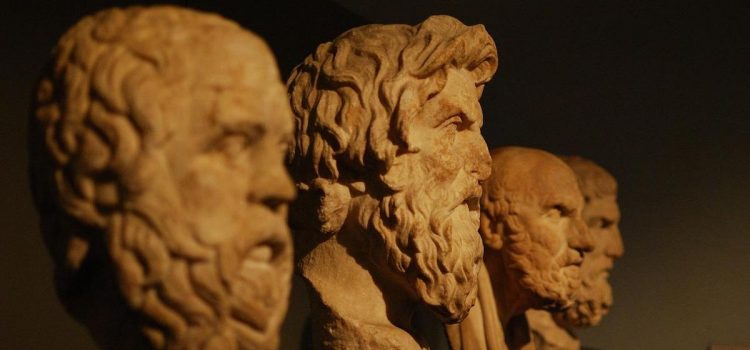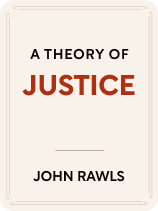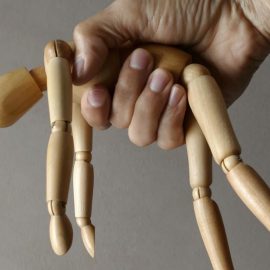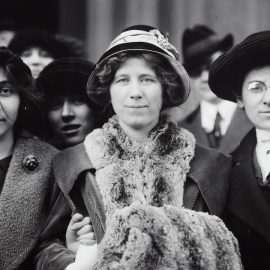

This article is an excerpt from the Shortform book guide to "A Theory of Justice" by John Rawls. Shortform has the world's best summaries and analyses of books you should be reading.
Like this article? Sign up for a free trial here.
What is the purpose of the original position? What conclusions are most likely to result from the debate under the original position?
The original position is a hypothetical situation where a group of equals must arrive at a rational definition of justice. According to John Rawls, the original position ensures that the decision-makers won’t tend toward utilitarian theories of justice and will arrive at many of the same conclusions.
Keep reading to learn how the original position is negotiated and what the likely conclusions are.
The Original Position Negotiation
In the original position, the members of the group act as representatives of real citizens in a society at a one-to-one ratio—each citizen has their own representative. The representatives are all equally clearheaded and competent, they all have an equal say, and they all have to agree on a definition of justice before it’s finalized. In addition, they must arrive at this definition entirely through rational debate—they can’t use any threats of violence, appeals to emotion, or attempts to persuade each other through rhetoric alone.
Rawls goes on to explain how a group of representatives might negotiate in the original position. The process of negotiating in the original position consists of three steps:
Step #1: Complete Equality
As previously discussed, nobody will arbitrarily accept fewer primary benefits, nor will they accept others arbitrarily getting more primary benefits than they do. Therefore, the group will initially agree that everyone should get equal amounts of primary benefits. We’ll call this a state of “complete equality.”
Step #2: The Benefits of Inequality
However, according to Rawls, there are some instances where inequalities of wealth and power can actually leave everyone with more primary benefits than they’d have in a state of complete equality. These inequalities can improve efficiency and leave everyone with more than they would have had otherwise.
For example, a group is building a dam that will provide benefits to everyone—flood protection, water, hydroelectricity, and so on. In a state of complete equality, nobody has the authority to give orders or the resources to fully fund the project. But with some inequality of wealth and power, the group could have a leader to organize the project and a wealthy individual to provide the funding for it. In this case, some inequality would help the group build the dam much more efficiently (or at all) so everyone could benefit from it.
Therefore, in the original position, people can accept inequalities of wealth and power (but not of basic rights and liberties) as long as these inequalities benefit everyone and are administered fairly.
Step #3: Administering Inequality Fairly
To ensure that these inequalities are administered fairly, the group would attach them to positions or roles in society, then add the condition that everyone has an equal opportunity to fill these roles—this ensures that people with additional power and wealth are accountable to society as a whole and that those rules aren’t arbitrarily limited to some people over others.
According to Rawls, the group would also add the condition that unequal distributions of wealth or power should provide the greatest possible benefit to those with the least. Even when inequalities leave everyone better off than they were before, they’ll still inevitably leave some people with less wealth and power than everybody else. This second condition prevents distributions where those with the most benefit at the expense of those with the least. Representatives don’t know whether or not they’re advocating for someone with very little, so they’d want to ensure these benefits for the least fortunate just in case.
For example: In a state of complete equality, everyone has $25,000. The society decides to build the dam mentioned above and has to choose among three unequal distributions:
- Because of their salaries, dam managers now have $100,000 and dam workers now have $75,000. Because of cheaper water and power, everyone else now has $35,000.
- Society invests more in the dam to make it better. Dam managers now have $200,000 and dam workers now have $100,000. Water and power are even cheaper, so everyone else has $50,000.
- Society invests even more in the dam. Dam managers now have $250,000, dam workers now have $150,000, and everyone else has $30,000 due to high dam taxes.
While everyone is better off with the dam than they are without it, according to Rawls, the second scenario is the most just unequal distribution because it provides the greatest possible benefit to those with the least.
| Capitalism Under Justice as Fairness From its very beginnings, liberalism has been closely tied to capitalism, or private ownership of industries for individual profit. Early liberals like John Locke viewed the right to own private property as a fundamental human right, arguing that a just government could not and should not interfere with it. In addition, liberals like 18th-century Scottish philosopher Adam Smith argued that people acted as rational, self-interested individuals in a capitalist free market, an idea that liberals also apply to the political realm. Rawls himself uses the ideal of the rational, self-interested individual in his construction of the original position as seen above. In this section, Rawls justifies his own version of capitalism—he claims that inequalities of wealth (private ownership) allow a state to function more efficiently than in a state of complete equality. However, Rawls argues for a far more limited conception of capitalism, one regulated by the state to try and ensure fairness and general well-being. This is a middle ground between right-wing classic liberalism and its critics on the left: Classic liberals like Smith believe government interference in the market disrupts the generation of wealth in society and therefore disrupts general well-being, while leftist critics of liberalism like Karl Marx argue that capitalism is built on exploitation and therefore cannot work for the common good in the way Rawls wants it to. |
The Conclusion of The Original Position
According to John Rawls, the original position debate will likely result in what he calls “justice as fairness.”
Justice as fairness has two principles:
- All citizens have equal fundamental rights that nobody can take away.
- Citizens can have unequal amounts of wealth and power only under the following circumstances:
- These unequal distributions benefit everyone in society and most benefit those with the least amount of wealth and power.
- Everyone has an equal opportunity to obtain wealth and power.
| A Theory of Secular Christianity? Many scholars have noted the connections between Rawls’s philosophical theories and his Christian religious beliefs, and they suggest that justice as fairness is his attempt to justify the Christian conception of equality and charity with secular logic instead of faith. Rawls was a religious man and even considered becoming a priest in his youth. However, his faith was shaken during his service in World War II, where he saw much of the horror and destruction that people are capable of. Some scholars see justice as fairness as Rawls’s attempt to argue that whether or not human equality and kindness come from God, everyone should work toward them on this earth. Most notably, Rawls’s principles of justice as fairness seem like a secular interpretation of Matthew 25:40, when God says, “Inasmuch as you have done it to one of the least of these my brothers, you have done it to me.” In other words, anything you do to those with the least, you also do to God himself—which naturally would lead one to conclude that a moral and just society must take care of everyone, especially those with the least. Rawls’s two principles try to guarantee that happens, while the original position allows him to justify his moral claim by appealing to reason instead of scripture. |

———End of Preview———
Like what you just read? Read the rest of the world's best book summary and analysis of John Rawls's "A Theory of Justice" at Shortform.
Here's what you'll find in our full A Theory of Justice summary:
- John Rawls's 1971 theory of justice as fairness
- A breakdown of Rawls's Original Position theory and framework
- The three duties every citizen has in a just society






